Rembrandt Exhibit: ‘What’s a Fake and What’s Real’
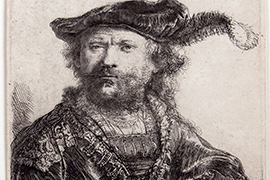
The art works of Ignace Joseph de Claussin, Francois Vivares, David Deuchar and John Smith of Chichester will go on display at the Hand Art Center this month.
They will be in some classy company, exhibited alongside 30 prints made from copper plate etchings by Rembrandt Harmenszoon van Rijn, the Dutch master who lived from 1606-1669.
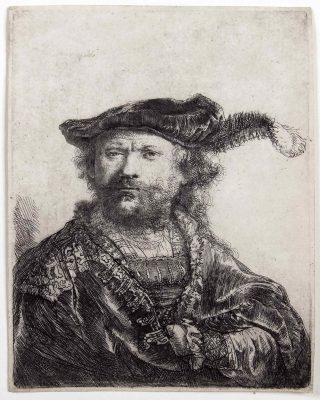
But the aforementioned quartet must have an asterisk placed by their names: They are forgers who in the 18th and early 19th centuries faked such well-known Rembrandt works as “Self Portrait in Velvet Cap with Plume” and “Beggar Leaning on a Stick.”
The exhibition, titled “Rembrandt Etchings: States, Fakes, and Restrikes,” explores not only the Dutch master’s reputation as one of the most significant printmakers in art history (along with his renowned portrait paintings) – it also explores the phenomenon of Rembrandt forgeries, and how art experts authenticate the real deal. Ten of the 40 works are forgeries.
The exhibit, on loan from the University of Wisconsin-Milwaukee, will run from Jan. 18 through March 1, with the opening reception from 6-8 p.m. on Friday, Jan. 25.
“Patrons are going to find out what’s a fake and what’s real,” said Hand Art Center Director Tonya Curran. Texts accompanying the works will detail how art experts look at paper, light and dark areas, heaviness of line and shading, and the presence or absence of certain details to uncover the craftiness of the forgers.
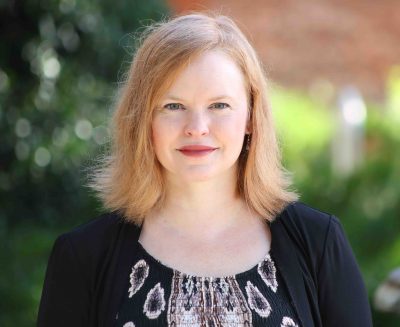
“Art historians and experts, especially experts on Rembrandt, would probably be able to spot the fakes pretty quickly,” Curran said. “We’ll have a handout that people can take away with a synopsis of how these fakes are determined.”
Patrons won’t have to play art detective themselves – the exhibit’s fakes will be clearly labeled in red ink with details on who forged them and when.
The exhibit will include three other categories of prints made from Rembrandt’s original etchings.
A “pull,” also called a “lifetime pull,” is a print “done by Rembrandt himself,” Curran said. The name is derived from the fact that making a print involves lifting or pulling a sheet of paper from the print plate or block, revealing the print.
A “state” is a print impression made from a plate or block, usually before the production of the regular edition, in order to correct, add to, or check the development of a work. Rembrandt created various states during his lifetime. After his death, more authorized states were created by reworking his plates to produce good impressions.
A “restrike” is an impression made from the plate (or other matrix) after the original edition or issue has been completed. After Rembrandt’s death in 1669, many publishers and printers continued to produce authorized prints from the artist’s plates. Such works also are called “posthumous impressions.”
Patrons will have an opportunity to play art detective themselves: The exhibit features a lifetime pull, a restrike and a forgery of “Self Portrait in Velvet Cap with Plume” all displayed side by side, allowing viewers to see if they can detect differences between the three prints of the same image.
“About 300 prints are attributed to Rembrandt,” Curran said. “That’s far fewer authentic prints than was once believed.” (That Rembrandt also created about the same number of paintings during his lifetime is indicative of the passion he had for printmaking.)
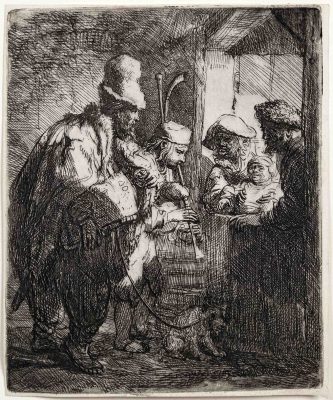
The exhibition’s texts say that Rembrandt is “one of the most influential printmakers in the history of art” who “created etchings that offer a wide range of subjects, from incisive representations of scriptures to studies of street life. His prints possess comedy as well as sober social commentary and have influenced innumerable later printmakers.”
The exhibit includes such works as “The Strolling Musicians,” “Joseph’s Coat Brought Before Jacob,” “Christ Raising Lazarus,” “Landscape with Cow Drinking” and “The Golf Player.”
“This exhibit is important because there have been a number of art works throughout history and even into the 20th century that have been proven to be fakes,” Curran said. “Some fakes can also have their own value because the forger is so good. This was happening a long time ago but it’s still happening today.
“I also feel like this exhibit is reflective of our Stetson values – there’s an international component to it. And it’s expanding our knowledge about a very important figure in the history of art.”
If You Go:
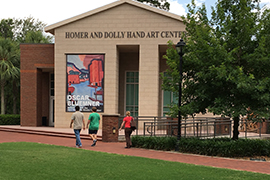
“Rembrandt Etchings: States, Fakes, and Restrikes” will run Jan. 18 through March 1 at the Homer and Dolly Hand Art Center on Stetson’s Palm Court/Quad, 139 E. Michigan Ave., DeLand. The opening reception is set for Jan. 25 from 6-8 p.m.
Admission is free and open to the public. Designated parking is available in the lots at East Arizona Avenue.
Center hours are 11 a.m.-4 p.m. Monday through Wednesday and Friday; 11 a.m.-6 p.m. Thursday; and noon-4 p.m. Saturday. Closed on national holidays, holiday weekends and university breaks. Information: 386-822-7270.
— Rick de Yampert



